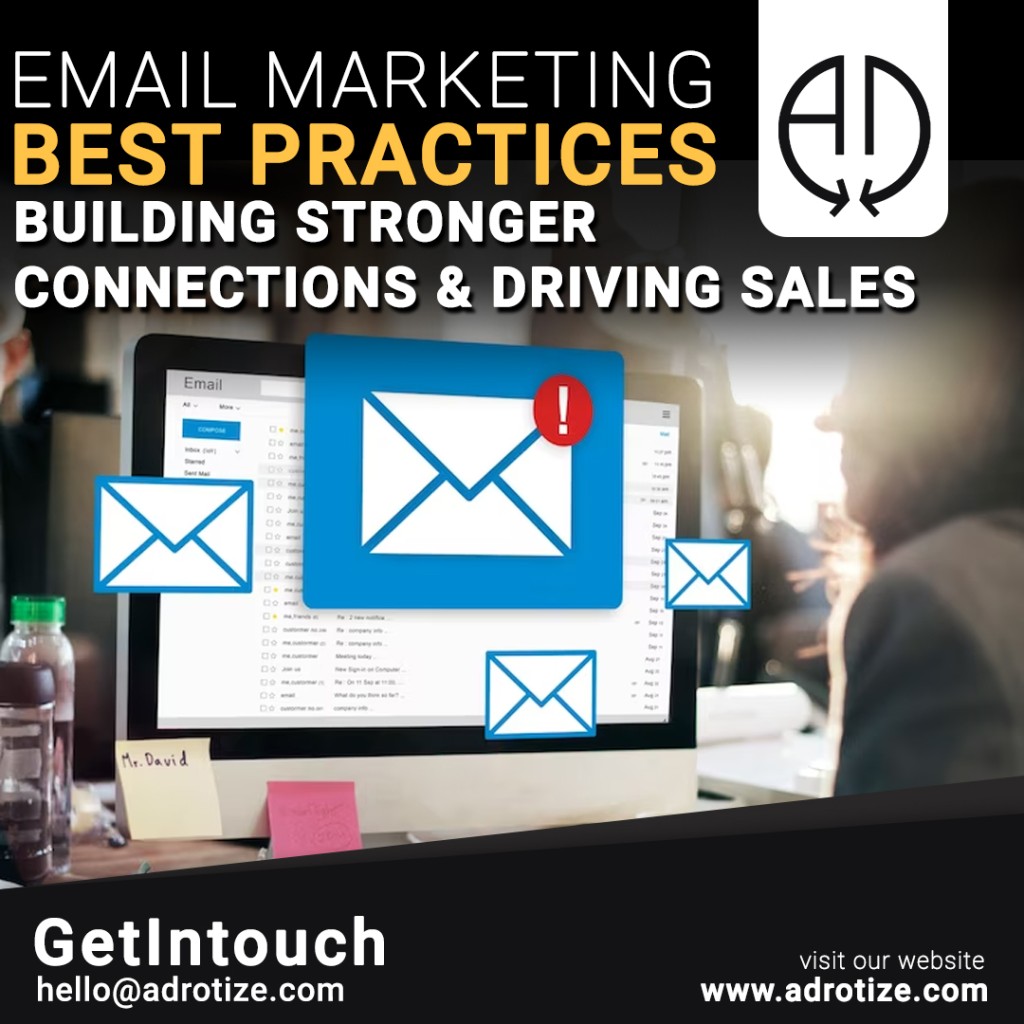
Email marketing remains one of the most effective and cost-efficient strategies for businesses to engage with their audience, nurture leads, and drive conversions. With a well-executed email marketing campaign, you can build stronger relationships with your subscribers, deliver targeted content, and achieve your marketing goals. In this blog post, we will explore email marketing best practices that can help you maximize the impact of your campaigns and achieve tangible results.
Building a Quality Email List: Start by building a quality email list comprised of individuals who have willingly opted in to receive your communications. Utilize lead generation techniques such as website sign-up forms, gated content, and incentives to encourage subscriptions. Focus on obtaining permission-based email addresses to ensure compliance with privacy regulations.
Segmentation and Personalization: Segmentation is key to delivering targeted and relevant content to your subscribers. Divide your email list into segments based on demographics, interests, purchase history, or engagement levels. Craft personalized emails that address the specific needs and preferences of each segment, increasing engagement and conversions.
Compelling Subject Lines: A well-crafted subject line can significantly impact email open rates. Create subject lines that are concise, compelling, and create a sense of urgency or curiosity. Experiment with personalization, emojis, and A/B testing to determine the subject lines that resonate best with your audience.
Engaging Content: Deliver valuable and engaging content in your emails to keep subscribers interested and encourage them to take action. Use a mix of educational content, product updates, promotions, exclusive offers, and storytelling to capture attention. Incorporate visually appealing elements, such as images, videos, and infographics, to enhance the visual appeal of your emails.
Clear Call-to-Action (CTA): Every email should have a clear and prominent call-to-action (CTA) that directs subscribers to take the desired action. Use compelling language, design eye-catching buttons, and ensure that the CTA is easily clickable on both desktop and mobile devices. Optimize landing pages to align with the email’s CTA and provide a seamless user experience.
Mobile Optimization: With the increasing use of mobile devices, optimizing your emails for mobile is crucial. Ensure that your emails are mobile-responsive and render correctly on various screen sizes. Use a single-column layout, legible fonts, and appropriately sized images to enhance the mobile user experience.
A/B Testing and Analytics: Continuously test and analyze your email campaigns to improve performance. Conduct A/B tests on different elements such as subject lines, CTAs, content, and design. Analyze key metrics like open rates, click-through rates, conversion rates, and unsubscribe rates to gain insights into subscriber behavior and preferences. Use the data to refine your email marketing strategy and optimize future campaigns.
Respect Privacy and Provide Value: Respect your subscribers’ privacy by implementing robust data protection practices and obtaining proper consent. Be transparent about how you will use their information and provide options to unsubscribe or manage preferences. Focus on providing value in every email, whether through educational content, exclusive offers, or personalized recommendations.
